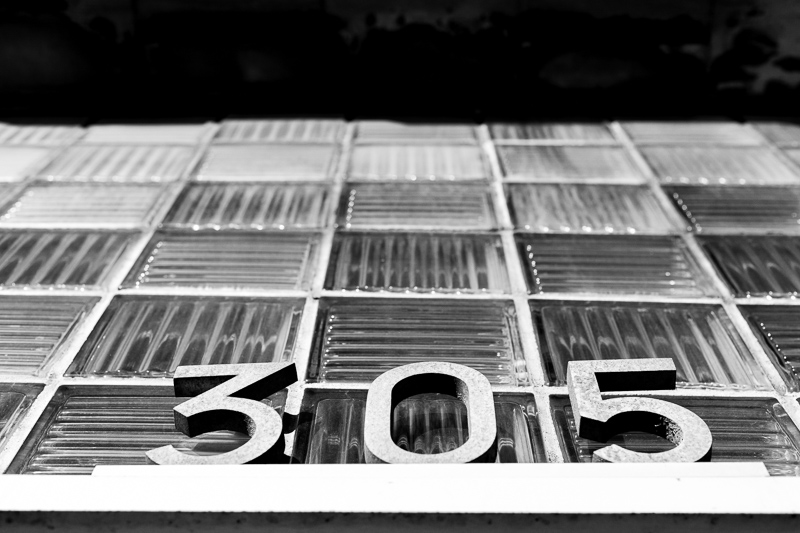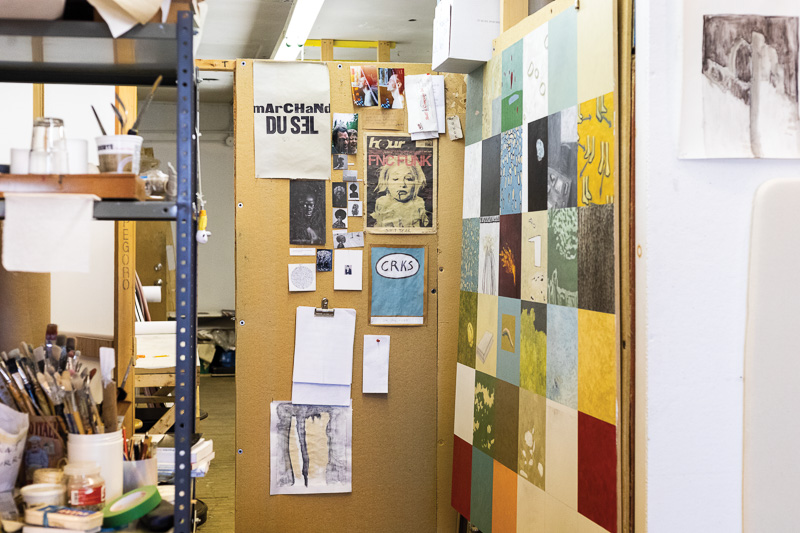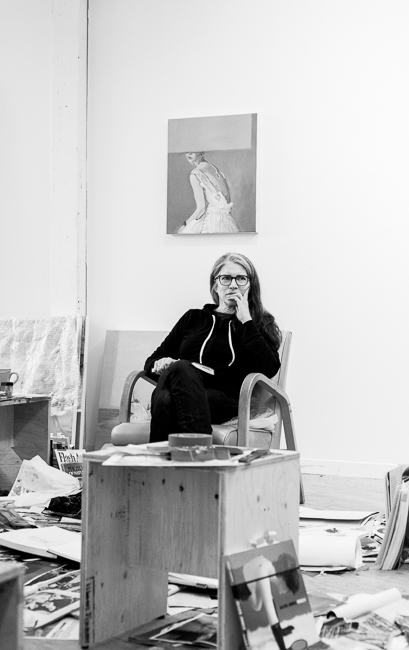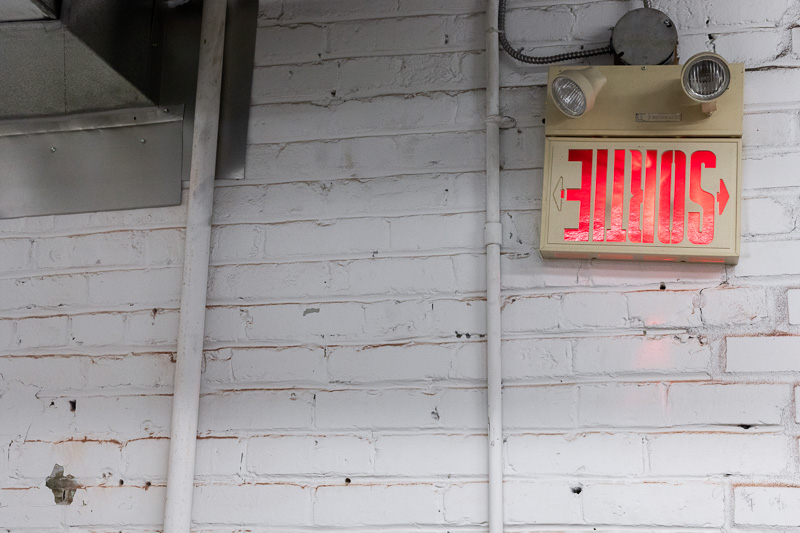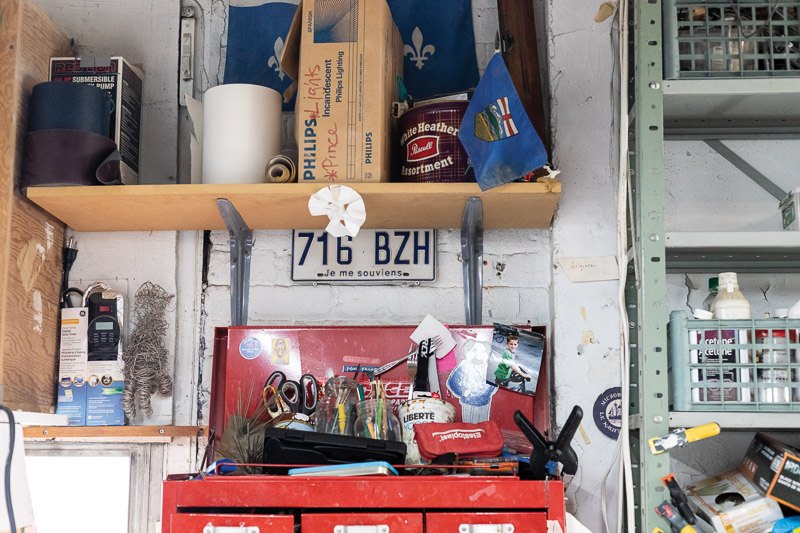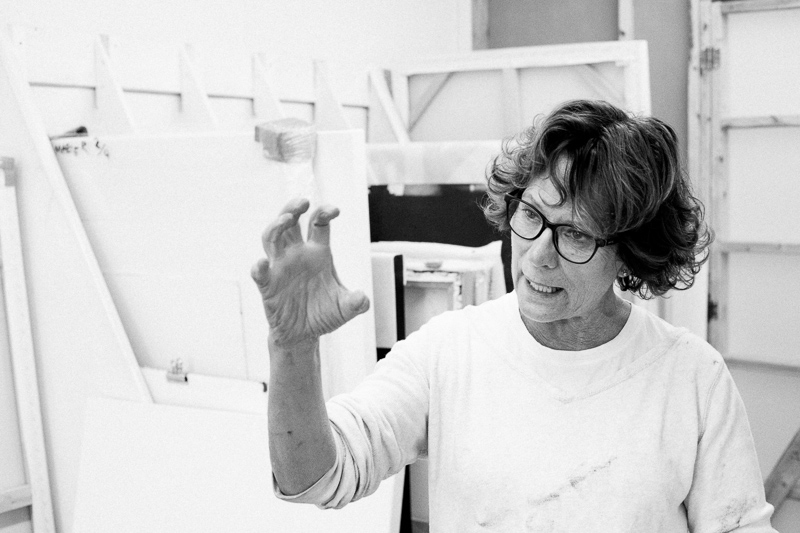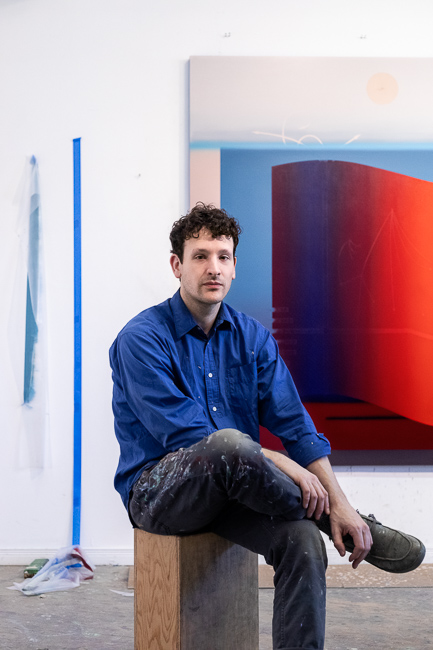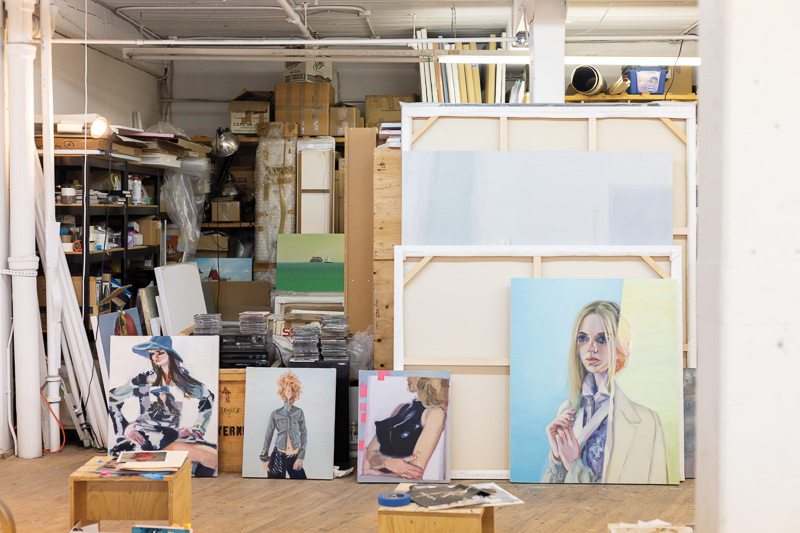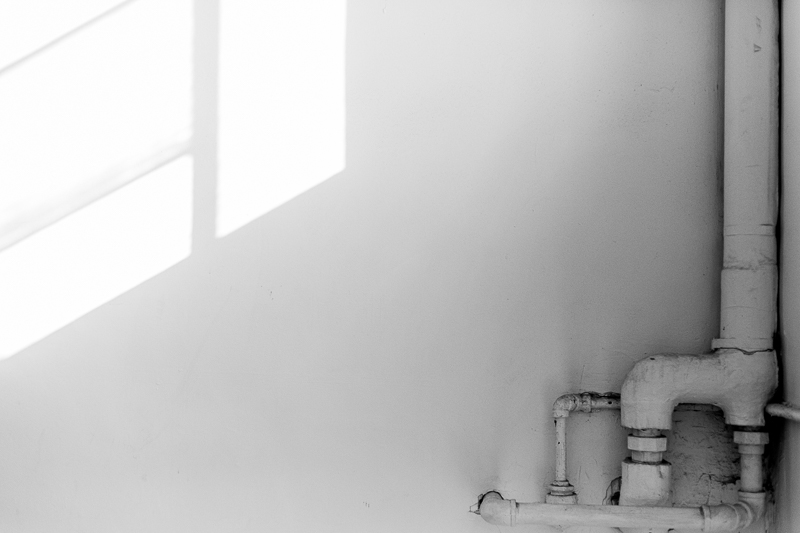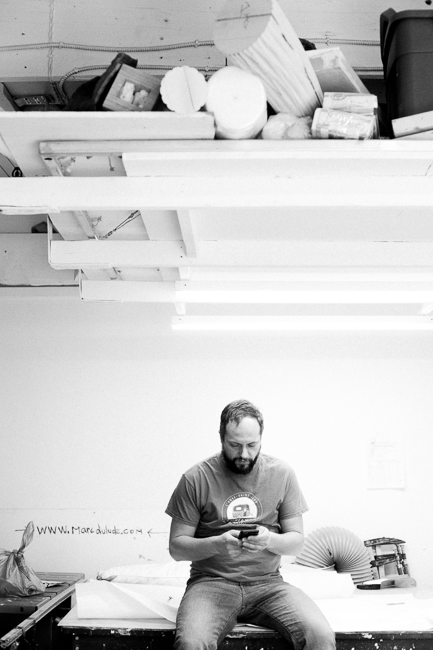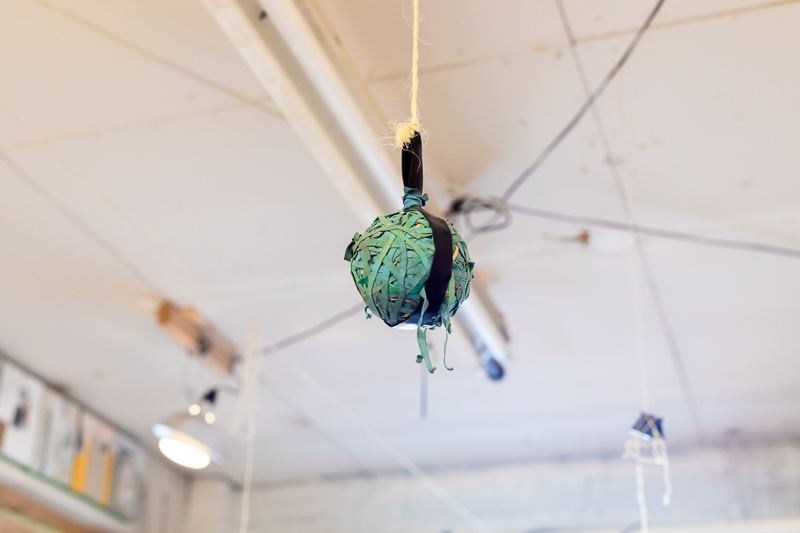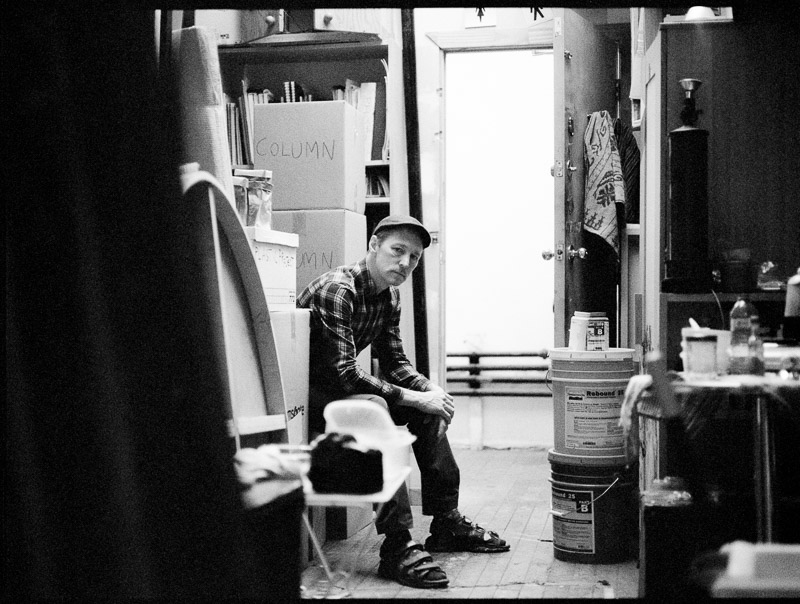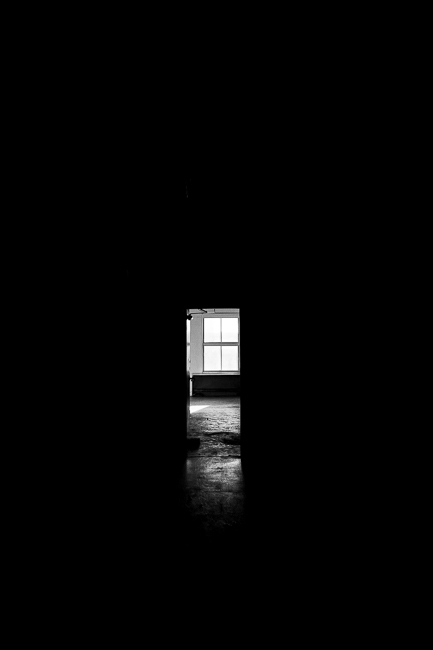[October 27, 2020]
By Samuel Larochelle
When the grinding gears of gentrification sounded the knell for the artists’ studios at 305, rue Bellechasse, photographer Sandra Larochelle quickly went to meet with the artists in order to immortalize their experience in the building. It was a way for her to pay tribute to the location where she was born as an artist and to continue her personal work on memory.
After completing her studies in photography, in 2015, Larochelle felt the need to have a place where her world could come to life. “I was looking for somewhere to spread out, to put the images and texts that inhabited me throughout the process,” she remembers. “When I visited a studio at 305, I immediately saw a welcoming, light-filled space, with a lot of history, wood everywhere, and high ceilings, where I could be in contact with people with other practices. It seemed to be an environment that lent itself to doing things differently.”
The real-estate market, however, got the better of her first art space. “As happens with many industrial sectors, artists moved into certain buildings to take advantage of affordable rent for a large space and a fairly central location. Little by little, the neighbourhood became popular – due, among other things, to their presence. The buildings rose in value and the owners wanted to repossess the spaces.”
Despite a year of negotiations to keep the studios at 305, rue Bellechasse, reality hit: all the artists eventually had to leave. The second floor, where Larochelle’s studio was, was the first to be emptied, during winter 2020.
Naturally, Larochelle, who was already photographing the building and its fascinating architectural details, wondered how she could preserve images of this place that had been so important to her. “I was upset to leave. One day, I had the idea that I could meet with the other artists and photograph them in their spaces, as a form of souvenir album about their relationship with the building. But the more I did, the more I realized that they cherished their experiences at 305 more than the shell of the building itself.”
Nostalgia and memory are central to Larochelle’s practice. “I see photographs as an exact reporting of what is happening in front of me or the interpretation of a moment. And I believe that images are strong not necessarily due to their composition or what they reproduce, but for the memories that they bring back.”
Indeed, her personal life was marked by her father’s coping with Alzheimer disease late in life. “His illness caused me to question what I want to keep in my memory and how it will survive. Although it isn’t always on my mind, this idea is not insignificant. I started doing photography at a time when it was uppermost in my thinking.”
Having been long considering a project on the erasure of memories and as she had been working on the photographs at 305 for a while, Larochelle saw a call for applications from the Plateau-Mont-Royal borough for art projects to be displayed outdoors so that the works would be accessible at all times during the pandemic. She proposed an exhibition on the advertising signboards at the corner of Laurier and Papineau avenues. “It’s an abandoned corner, with potential, that people appropriate occasionally. I felt that it highlighted the precarious situation of artists. Working with graphic designer Zoé Brunelli, I wanted the photographs to be glued to the wall in a sort of considered scenography, printed on fragile paper that would tatter over time.”
From August 17 to August 31, 2020, passersby could see for themselves the activity at the heart of 305, rue Bellechasse. “My objective was to feature the people who occupied the space, and the space itself. Without distorting them, I wanted to photograph them with the nostalgia that I feel about them.” Some photographs feature works produced in a studio. In others, there’s a blur in the image that evokes an artist in motion. “It was my way of creating images that hint at a sort of urgency, when everything is going too fast and you’re in a state of total upheaval. That being said, this wasn’t something made up. The artists shared this feeling with me. I then allowed myself to give my perspective at the time when it was all going on.”
Sandra Larochelle is an independent photographer based in Montreal. A member of the Archipel collective, she creates projects in both the visual arts and commercial photography. Her particular interests are photo reportage and portraiture, and the unique encounters that result from practising these disciplines. Memory and identity are core to her practice. www.sandralarochelle.com
Samuel Larochelle is an independent journalist (La Presse, Caribou, L’actualité, Les Débrouillards, Elle Québec, Fugues, etc.), writer, biographer, screenwriter, poet, producer, and host of cultural events. He writes passionately about a variety of subjects, including the arts, travel, and sports, but also about healthcare, nutrition, labour, and regional economics, among others.

